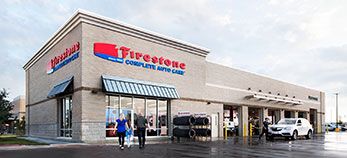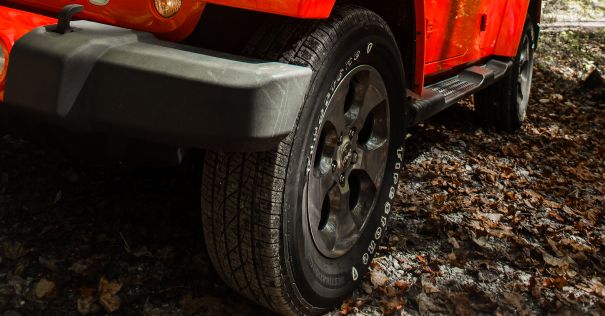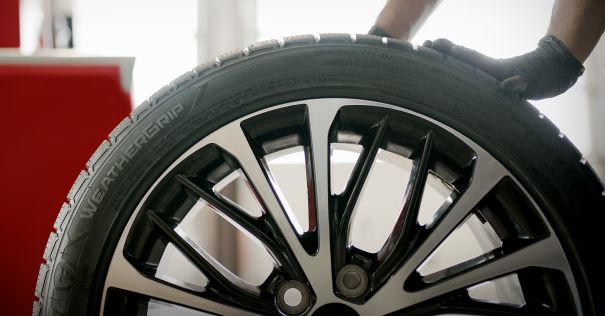Easy ways to check if your tires need to be replaced
Use a tire tread depth gauge
Tire tread is the grooved portion of a tire where rubber touches the road. Good tire tread provides traction and helps ensure your car is safe to drive on wet, icy, and unpaved roads. Over time, tread will wear down and impact traction, so keeping an eye on tread depth is important.
A tire tread depth gauge measures tread depth in 32nds of an inch. In most states, a tire tread depth of more than 2/32” is legally required. To use a tire tread gauge, simply place the measuring pin into the center of the main tread groove on your tire and push down until it makes contact with the tire on either side of the gauge. Repeat this at various spots around the tire to find the smallest measurement.


Check the tread wear bars
Tread wear indicator bars are small, raised bars located within the grooves of your tires between the tread markings. They are specifically placed there to offer a visual indication of your tread wear. When your tread has worn down to the same level as the tread bars, it’s time for new tires. Since the tread depth bars indicate the legal tire tread depth limit for most states, we recommend replacing your tires before they reach this point.
Determine manufacture date
Tires are only built to last so long and no matter how diligent you are, eventually, you’ll need to replace your set.
If your tires were produced in 2000 or later, the last 4 digits of the DOT number, or Tire Identification Number, will tell you the week and year of production. For example, 2420 would mean the tires were manufactured in the 24th week of 2020. You can find the DOT number on the sidewall near the rim.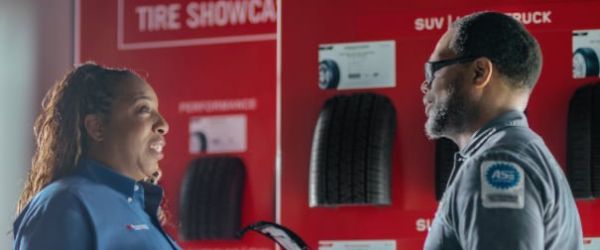
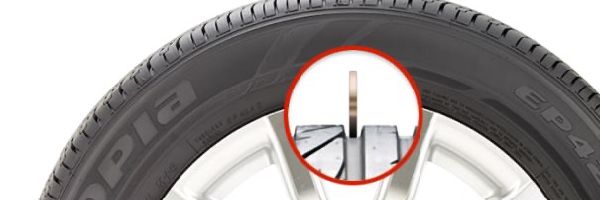
Perform penny tread depth gauge
If you don’t have a tire tread gauge, using a penny to measure can be another way to do a quick check. Stick a penny in the tire tread groove. If the tread is touching Abraham Lincoln’s upside-down head, the depth is at least 2/32”, the legal requirement. In most states, a tire tread depth of more than 2/32” is legally required. Repeat the test in various spots around the tire to make sure the tire tread isn’t wearing unevenly. Regular tire rotations can help ensure your tires wear evenly and last longer.
Friendly Reminder: Check tire pressure regularly
Tire pressure is linked to fuel economy, handling performance, and tire longevity, so you want to make sure you’re driving with optimal pressure at all times.
You can find the recommended pressure for your vehicle on a sticker on the driver’s side door jamb, in the owner’s manual, near the trunk lid, console, or on the fuel door. The pressure will be expressed in PSI (pounds per square inch) so look for a number like 35 PSI.
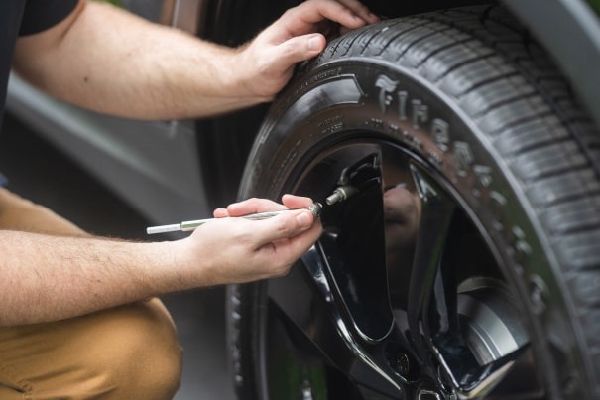
Visual signs it’s time to get new tires
Noticing these things while driving? You need new tires
TIRE DECISION GUIDE
Buying new tires is an investment in your vehicle. Use our tire decision guide to narrow down your options and find a set of tires that fit your vehicle—and your budget.
Frequently Asked Questions
HOW OFTEN DO YOU NEED NEW TIRES?
Generally, vehicle manufacturers recommend you replace your tires every six years. That being said, driving habits, the weather and road conditions in your area, and how well you maintain your tires should factor in. Most tire manufacturers recommend replacing your tires every 10 years, regardless of tread wear.
HOW MANY MILES SHOULD TIRES LAST?
A set of tires should last anywhere between 50,000 and 60,000 miles on average. The type of tires as well as factors like driving habits, weather conditions, and maintenance routine will all have an impact on tire longevity.
HOW DO I EXTEND THE LIFESPAN OF MY TIRES?
If you want your tires to last beyond six years, make sure to do regular tire rotations and maintain proper alignment and tire pressure. Avoid bad driving habits like hard braking, aggressive accelerating from a standstill, and taking corners too fast. Stay away from uneven roads, potholes, and broken pavement whenever possible. Inspect your tires regularly to keep an eye out for uneven tire tread wear and any other damage.
DO I NEED AN ALIGNMENT AFTER GETTING NEW TIRES?
An alignment helps make sure that all four tires are properly lined up with each other and the road. This helps reduce uneven tire tread wear and other issues over time, so it’s not a bad idea to get an alignment to ensure your new tires stay in good shape for as long as possible. While alignment isn’t always required, it is a good investment in the longevity of your tires and your vehicle.
IS IT DANGEROUS TO DRIVE WITH OLD TIRES?
Yes. Many car accidents are caused by old, damaged tires that should have been replaced. Even if you still have adequate tread depth, time and the elements will cause tire rubber to deteriorate and crack, making it unsafe to drive on. A visual inspection isn’t always enough to determine if tires are unsafe, so make sure you also know the age of your tires so you can do your due diligence.
HOW MUCH DO NEW TIRES COST?
The cost of new tires can vary anywhere from $100 to $1,000 per tire, depending on the tire. It can be easier to keep track if you replace all your tires at the same time as a unit.
